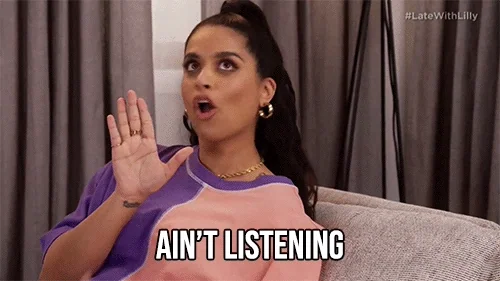
"Some students ignore my instructions."
"A group of students picks on others."
"Some students rely on me for simple tasks."
"Some students talk back or show disrespect."
Sound familiar?
Instead of constant behavioral interventions like reminders or punishments, what if small changes could guide students to better behavior?
Nudge theory can help create a more positive classroom by influencing student behavior with minimal effort.
Common Classroom Challenges
Classrooms face challenges like cheating, conflicts, and distractions, whether in elementary or secondary school. Which of the following have you come across with your students?

Elementary School Setting
Aggressive behavior: hitting, shouting, or being verbally aggressive.
Anxiety & withdrawal: avoiding tasks or pretending to be sick.
Overdependence on the teacher: always asking for help, even with simple tasks.
Peer conflict: excluding, teasing, or physical fights.
Impulsivity: blurting out answers, interrupting, or acting on impulse.

Secondary School Setting
Academic dishonesty: cheating, copying, or fighting for higher grades.
Defiance & non-compliance: refusing instructions, arguing, or testing limits.
Peer conflict & aggression: bullying, verbal fights, or excluding others.
Lack of engagement: daydreaming or chatting when they should be working.
Chronic absenteeism/tardiness: Skipping class or showing up late.

What is Nudge Theory?
Nudge theory in education uses simple changes to help students make better choices while still letting them decide for themselves without forcing them.
The opposite of nudge theory is direct control, where students have to follow strict rules that take away their ability to choose what’s best for them.
Core Principles of Nudge Theory
Choice architecture: changing how options are shown to help people choose the best one.
Example: putting healthy food at eye level in a grocery story.
Cognitive biases: using habits, like people sticking with the default option.
Example: Automatically signing people up for savings plans at a bank.
Libertarian paternalism: encouraging good choices without forcing people, while making it easy to opt out.
Nudge Theory in Action
One experiment shows how small changes can influence people to eat healthier. At a buffet, large pieces of cake and whole apples were offered.
Before: People ate 13g of apples and 94g of cake.
After: With smaller portions (sliced apples and smaller cake pieces), people ate 20g of apple and 61g of cake.
Watch the video below to see nudge theory in action at the buffet:
Conclusion: By simply changing the size of the portions, people made healthier choices without being forced to do so. This shows how nudge theory can subtly influence behavior for the better.
Did you know?
Nudge theory started at the Amsterdam airport's bathrooms, where staff painted a fly in urinals to give people a target. It worked! People kept the bathroom cleaner just because of that little tweak.
Using Nudge Theory to Tackle Classroom Challenges

Here's how you can apply nudge theory to use more subtle behavioral interventions with your students:
Challenge #1: Academic Dishonesty (e.g. Cheating on tests)
Do (Nudge) ✔️
Show data to set social norms (e.g. “9 out of 10 students think cheating is unfair.”)
Add reflection prompts before tests (e.g. “How does cheating affect others?”)
Don’t (Non-Nudge) ❌
Rely on threats or punishments alone (e.g. "If you cheat, you'll fail")
Challenge #2: Defiance (e.g. Refusing instructions)
Do (Nudge) ✔️
Offer limited choices to keep students feeling in control (e.g. “Start now or in 5 minutes?”)
Praise students who follow directions as role models
Don’t (Non-Nudge) ❌
Get into power struggles (e.g. "Do it my way or else!")
Challenge #3: Peer Conflict & Aggression
Do (Nudge) ✔️
Use anonymous compliment boards to boost kindness
Arrange seating to reduce conflict and build teamwork
Publicly praise inclusive behavior (e.g. “Love how Jamie shared!”)
Don’t (Non-Nudge) ❌
Rely on lectures or scolding without fixing the classroom environment ("You guys need to learn how to get along.")
Challenge #4: Low Engagement
Do (Nudge) ✔️
Use visual progress trackers
Add movement breaks or polls to lessons
Don’t (Non-Nudge) ❌
Deliver long lectures with no interaction
Challenge #5: Absenteeism
Do (Nudge) ✔️
Send reminder texts to students and families
Share class attendance stats (e.g. “90% of your peers came today!”)
Don’t (Non-Nudge) ❌
Use detention or lectures without positive support (e.g. "If you keep skipping, you’ll be in detention every week.")
Challenge #6: Overdependence
Do (Nudge) ✔️
Post visual steps for common tasks
Use rotating “class expert” roles to encourage peer help
Try SNOT (Self, Neighbor, Other Tools, Teacher) to teach self-checks before interrupting
Don’t (Non-Nudge) ❌
Give help right away without building independence
Shame students for asking too many questions
Challenge #7: Aggressive Behavior (e.g., hitting, yelling)
Do (Nudge) ✔️
Use visuals like calm corners or emotion charts
Teach intent using role-play (e.g., “Was it on purpose or an accident?”)
Don’t (Non-Nudge) ❌
Jump to punishment without teaching
Subscribe for more quick bites of learning delivered to your inbox.
Unsubscribe anytime. No spam. 🙂
Limitations of Nudge Theory
Nudge theory is a powerful tool, but it’s not a one-size-fits-all solution for behavioral interventions. Here are some challenges to keep in mind:
Skill gaps: Nudges that rely on self-control, like study reminders, don’t work well if students lack key skills like time management or organization.
Short-term wins: Nudges like small rewards or reminders might work fast, but without real learning, students often go back to old habits.
Ethical risks of manipulation: Some nudges, like automatically placing students in advanced classes, might limit their choices rather than guiding them.

So, what else can you do?
Combine with skill-building: Nudges work best with strategies. A focus timer helps more after students learn how to plan their time. ✔️
Respect opt-outs: Give them a say. Assigned “focus zones”? Great, but let them move if it’s not working. ✔️
Involve parents: Caregivers make nudges stronger. A quick update about progress can help students keep good habits at home. ✔️
Scenario: Nudge Theory & Student Engagement

One of your students keeps zoning out during class. They’re staring out the window instead of working.
Which behavioral intervention is the best way to nudge this student to stay focused?
A. Remind them that not paying attention will hurt their grades.
B. Use a progress tracker so they can see how much they’ve done.
C. Call on them randomly to keep them on their toes.
D. Move them to the front of the class so they can’t look away.
Quiz
What’s the best way to nudge them into staying focused?
Take Action
Ready to use nudge theory?

Try these steps when you implement behavioral interventions in your classroom:
Your feedback matters to us.
This Byte helped me better understand the topic.
New Bytes
We publish fresh Bytes daily, we can send you a notification when that happens.
